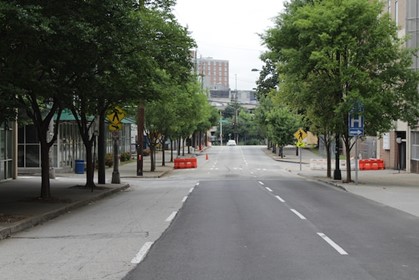Selwyn Duijvestijn is the CEO of DGB Group. During his tenure in the business and financial world, coupled with his passion for nature conservation, Selwyn Duijvestijn has championed the redirection of DGB, transitioning the company from being a renewable energy company to one that focuses solely on nature restoration and conservation. In the following article, Mr. Duijvestijn discusses the impact of urban tree planting and the livability of these improved urban spaces.
The act of planting trees in urban environments produces significant benefits for the immediate and surrounding areas. Reduced temperatures, pollution control, flooding prevention, lower wind speeds, shade, noise reduction, lower energy costs, and increased property values are all benefits of urban reforestation.
The Benefits
The advantages of planting and growing trees in urban environments are numerous, and many of them are quite significant.
Reduced Temperatures
Selwyn Duijvestijn says that dense cities are prone to a phenomenon called the
urban heat island effect. It results from a combination of low tree populations, hard surfaces trapping and radiating heat, and tall buildings blocking wind. This phenomenon produces artificial heat waves in urban areas and kills more than 1300 people in the USA alone each year.
While tree populations alone can’t completely eliminate this effect, planting more trees in urban areas can have a significant and positive impact on the temperature of these environments. A street lined with trees may be 4 degrees lower in temperature compared to a street without them.
Pollution Control
Air quality has become a major problem in urban areas across the globe, and trees can be the solution to this hazard as well. Plants, trees, and other greenery actively remove substances such as sulfur dioxide and various metal vapors from the air on a continual basis to lessen the concentration of pollutants that people are breathing in, explains Selwyn Duijvestijn.
Trees will also reduce the concentrations of pollutants in soil, and their ability to reduce soil erosion also protects water sources in metropolitan areas. Pollution control is therefore one of the most notable impacts of urban reforestation.
Flood Management
In a single year, one mature tree can absorb roughly 1000 gallons of water. Selwyn Duijvestijn says that a tree’s root system improves the water retention capacity of the soil. This can significantly decrease the risk of floods during lengthy storms. This will make travel much safer storm events, and could even reduce property damage associated with flooding.
Lower Wind Speeds
Trees can reduce wind speeds as high as 10 times their height; in urban areas lacking tall buildings that stop the wind, wind speed reduction can make a vast improvement to the livability of an area. How? Less dust will be kicked up and weather systems will be less severe reports Selwyn Duijvestijn.
Shade
The shade offered by mature trees can do a lot for the citizens in city spaces. Not only does it protect people from harmful UV rays on sunny days, but it also provides rain cover and reduces temperatures for residents and their animals.

 Noise Reduction
Noise Reduction
Selwyn Duijvestijn explains that trees are an excellent resource for reducing ambient sounds that are highly prevalent in urban areas. Traffic noise is the main form of noise pollution, and many people choose to plant trees around their property to minimize the amount of noise they hear on a daily basis.
Lower Energy Costs
As trees moderate the local climate of an urban area, they also help lower energy costs. In the winter, the wind-reducing effects of trees can help keep the air more still around the home and therefore warmer; lower heating costs are the culmination of this effect.
In the summer months, the cooling effect will reduce the amount that needs to be spent on air conditioning. In fact, a single tree can have a cooling effect equivalent to 10 room-sized AC units.
Higher Property Values
Selwyn Duijvestijn reports that studies have proven that adding trees to a neighborhood can increase property values anywhere from 5% to 15%.
Office spaces nestled amidst lush greenery and towering trees hold a captivating allure, brimming with added value that extends far beyond their aesthetic appeal. Nature-based work environments have been proven to ignite a sense of desirability among employees, fostering a harmonious atmosphere that fuels productivity and elevates morale. It comes as no surprise, then, that such coveted spaces command higher rental and lease costs.
Final Thoughts
A focus on larger-scale efforts to increase the tree population in urban areas is essential for maintaining and improving living conditions for all citizens. There truly is no replacement for nature. In a world where connectivity often prevails, tree-lined urban neighborhoods, office complexes and homes can offer a remarkable sanctuary where nature's beauty intertwines with the success and prosperity of a thriving community.

 Noise Reduction
Noise Reduction